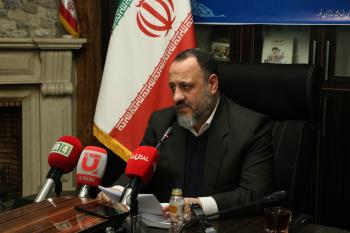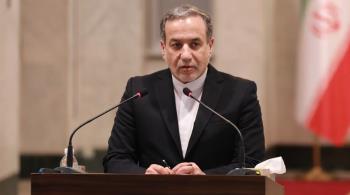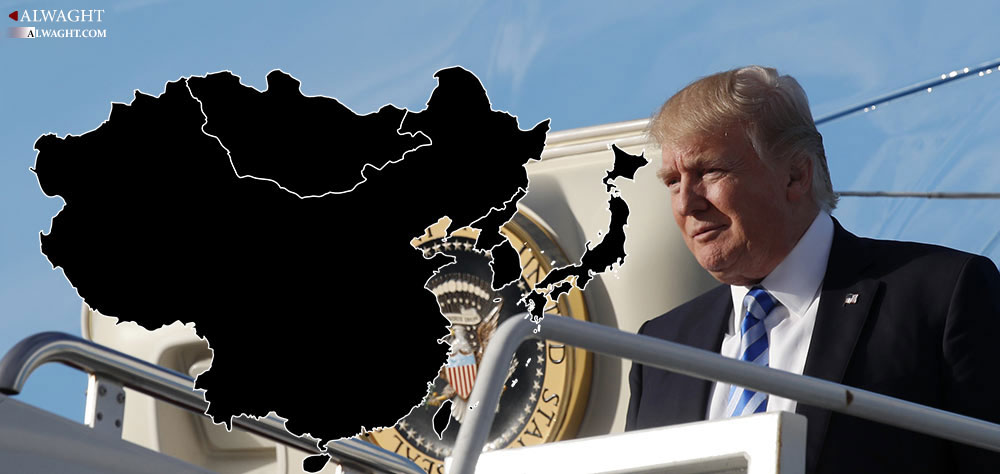Alwaght- The US President Donald who has shown little will to make long serial trips to the foreign countries nearly a year after his assumption of power at the White House has started his five-country Asian tour which will see him travelling to South Korea, China, the Philippines, and Vietnam, after ending his underway visit of Japan as his first station. The trip is expected to last at least 12 days.
The relatively-long visit to Asia of Trump, the longest foreign trip of an American president to Asia in a quarter century, comes in time of growing criticism against some of his close family members and relatives for their possible links to Russia, beside waves of controversial news reports about eruption of massive differences between him and his Secretary of State Rex Tillerson.
The two-week Asia tour provides the president with a scope to distance himself from the climate of endless controversy back in Washington, or perhaps, as his critics put it, a chance of escaping, though temporarily, the highly tense atmosphere that shows no sign of moving to calm. But aside from the anti-Trump situation at home, the president’s visit to East Asia region carries its own much significant messages and goals.
Protecting allies against North Korea, China
Japan was picked as the first stop opening the American leader’s Asian tour. Japan presents one of the key allies of the US in East Asia, and choosing Tokyo as the first destination is an act of reiteration of the alliance. Moreover, Japan in past few years rose to be one of the largest purchasers of the American arms in the region amid rising North Korean threats. Figures published suggest that Tokyo over the past decade bought over $4 billion in worth of weapons from various countries, with 93 percent provided by the American arms manufacturer.
Another issue returns to the Chinese-Japanese competition over more sway in the South China Sea. The Japanese leaders oppose Beijing's projects in the contentious sea, including China’s building of an artificial island Tokyo claims will be used for military purposes. The analysts maintain that by picking Japan as first stop of his trip, Trump wants to assure that the Tokyo-Washington military and economic alliance will remain standing.
Next station after Japan the American president intends to land in is the allied South Korea, though, unlike his Defense Secretary James Mattis on October 27, Trump is said to have no plan to visit the De-Militarized Zone (DMZ) on the border of South and North Koreas. But he will go to a military base just outside southern Seoul, where his country’s military forces are positioned. Trump is expected to assertively reaffirm the American backing for Tokyo and Seoul in the face of Pyongyang.
Sending message to North
What even adds to the importance of the Trump’s East Asia visit in the present conditions is Washington-Pyongyang trade of accusations and threats against each other especially after assuming the office of Trump on January 20. In his address to the United Nations General Assembly on September 19, the American leader threatened to “totally destroy North Korea” if the need arises. Responding to the bellicose rhetoric, Pyongyang officials since then threatened Washington with nuclear strikes, boasting that their country’s new ballistic missiles could hit Guam Island, an American territory in western Pacific Ocean, as well as Hawaii in mainland US. Before the trip, Trump stopped in Hawaii, signaling that he took serious the North's threats of possible targeting of the coastal region’s air bases that hosts the country’s strategic bombers.
Meanwhile, South Korea has alleged that it tracked nuclear activities of the North at one of its nuclear research sites, adding that it holds the feeling that Pyongyang is preparing to launch new missiles possibly in near future, perhaps while the American president is on his visit to the region.
With these conditions overshadowing the regional atmosphere, certainly Trump tour to the region comes with the purpose of garnering other regional countries' support to step up even more pressure on the North Korean leader. North Korea does nearly 80 percent of its business with the neighboring China, a country the US hopes to persuade to take tougher steps towards tightening the noose on Pyongyang.
On the other side, Trump will do more to exaggerate the North Korean dangers during his meeting with the hosting countries' leaders, a trick he will reuse to pave the way for expansion of the American military presence in the Far East.
Seeking Chinese cooperation
Trump is scheduled to visit China after Japan and South Korea. During the meetings with the Chinese leadership, he is expected to do his best to push for more alteration of the Beijing trade policies in business relationship with Washington.
Trump has been a constant critic of China especially when it comes to business. He accuses Beijing of devaluing its currency on purpose as part of a broad monetary manipulation, as well as overtaxing the imported American products. Chinese currency devaluation along with overtaxation of the American goods offer China opportunity of expanded exports to other countries and also drop in the national importation. This is the main area of Trump’s anti-Chinese criticism. So, he is expected to press the Chinese leaders to cut high tariffs set on American imports to China.
China is working hard to meet an end for overcoming the US economically. It has recently unveiled plan set by the ruling Communist Party for the next 10 years to outstrip the US as an economic superpower. China now has trade surplus of about $400 billion with the US and also has the position of the biggest holder of the US treasuries. Therefore, the US is tangibly reliant to China.
Trump is going to great lengths to cut this reliance majorly through promoting slogans like “America First” or rolling out protectionist measures. He specifically wants to stop entry to the US of cheap Chinese products. The current administration prevents the American companies from relocating their production lines or offices to China or other East Asian countries to save their country’s production strength.
On the other side, China finds the Trump’s isolationist approach on world's political and economic stage, which displayed itself in withdrawal from economic, environmental, cultural, political, and security treaties, an opportunity allowing Beijing present an alternative to Washington as a global leader. China and the US are also at odds over a set of other issues like the Chinese building of military installations in the South China Sea, and the US-Taiwan relations. But Trump will possibly not trigger Taiwan issue during the trip in a bid to convince China to scale down its majorly military and construction moves in the South China Sea, a goal looking quite unobtainable as the Beijing leaders recognize the controversial sea as part of the Chinese territory.



























